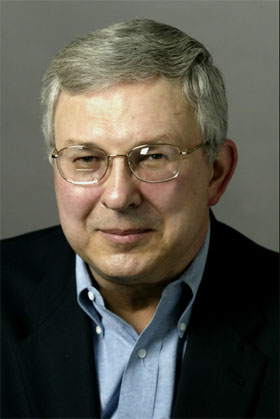
To the average person, an engineer might be seen as just another kind of scientist.
That may sound logical, but it isn't entirely accurate, according to a noted Duke University engineer and historian. This assumption blurs the lines between the two approaches to the natural world, and could be counterproductive to solving the world's major problems, such as curtailing greenhouse gases or coming up with new forms of renewable energy.
Scientists uncover the secrets underlying many aspects of nature, but it is up to the engineer to take these insights and devise practical solutions to a problem. So argues Henry Petroski, Aleksandar S. Vesic Professor of civil engineering and professor of history at Duke, in his latest book "The Essential Engineer," recently published by Alfred A. Knopf, N.Y. The subtitle of the book "Why Science Alone Will Not Solve Our Global Problems," might as well be the thesis of the book, with the title as the answer.
Although different in their skills and approaches, scientists and engineers will need to work together to solve global problems, he says.
"The conventional wisdom is that engineers are just another type of scientist," Petroski says. "Engineering is quite different. In general, the main objective of scientists is to understand the world as it is, while engineers take this knowledge to design or create new things that solve a particular problem."
"People need to recognize that science and engineering are distinct but overlapping endeavors. If we're serious about global problems and the major challenges facing society, it basically comes down to engineering solutions."
For this reason, he believes that engineers often receive short shrift, while the scientists may be getting too much of the credit. To be fair, both are needed, but Petroski thinks that the prestige of the engineer should to be elevated. He cites an anecdote reported by John Dustin Kemper in his 1967 book "The Engineer and His Profession," as a common perception of the two fields: "Every rocket-firing that is successful is hailed as a scientific achievement; every one that isn't is regarded as an engineering failure."
Petroski uses Orville and Wilbur Wright's development of the first aircraft as an example of how many ideas can become reality even without a complete scientific underpinning. It was years after the first manned flight before scientists produced a full theory of aerodynamics.
While Petroski cites numerous examples of achievements that were more engineering than scientific -- space travel, the Internet, the railway system -- he argues that both need to work together as equals. Since the problems of the world have become so complex and all-encompassing, coordination is essential for success.
"The goal after all, is not science and engineering for their own sake, but for the sake of the planet and its inhabitants," he writes. "There can be little doubt that these are not times for the global scientific, engineering, economic, political, and public policy communities to separate themselves into competing cultures. They can best unite when they understand each other's disciplines and their essential roles in contributing to the whole."
Underlying the many examples of contributions engineers have made to society over the centuries, the book is also a rallying cry for engineers to roll up their sleeves and start attacking the world's most daunting problems.
"In the end, dealing with threats to our planet requires teamwork. If science is to detect and engineering is to deflect an asteroid from its collision course with Earth, scientists and engineers will have to understand and respect each other and work together for the common good -- as the best of them do, even if newspapers do not always report or acknowledge it."